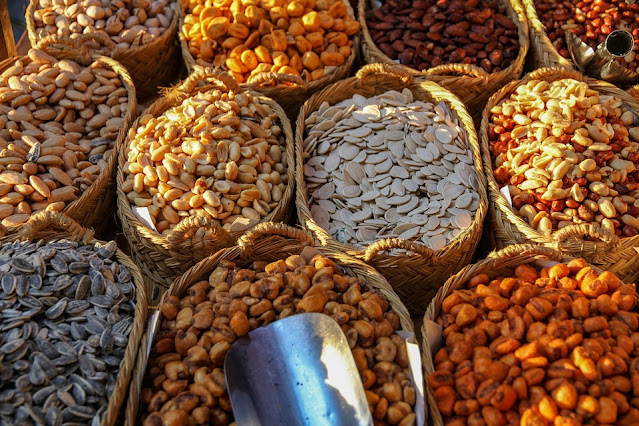Monk Fruit Explained: Natural Sweetener, Health Benefits, Uses, and Possible Risks
When it comes to natural sugar alternatives, Monk fruit has become a sweet sensation in the wellness world. Known for its zero-calorie sweetness and ancient origins, monk fruit is being hailed as a healthier substitute for refined sugar. But what exactly is monk fruit, and does it live up to the hype? Let’s explore its uses, benefits, and potential risks.
 |
| Image Courtesy- Monk Nectar |
What Is Monk Fruit?
Monk fruit, or Luo Han Guo, is a
tiny green melon that grows naturally in the lush regions of southern China and
northern Thailand. It has been used in traditional Chinese medicine for
centuries to treat coughs and sore throats. Research indicates that, the fruit derives its name from the
Buddhist monks who first cultivated it more than 800 years ago. The real magic
of monk fruit lies in its natural sweet compounds called mogrosides, which are
up to 200–300 times sweeter than regular sugar.
Studies show that, unlike sugar,
mogrosides contain no calories and do not spike blood glucose levels, making
monk fruit an attractive option for diabetics and health-conscious individuals.
Benefits of Monk Fruit
1. Zero Calories and Carbs
Monk
fruit sweetener is calorie-free and contains no carbohydrates, making it ideal
for people following low-carb, keto, or diabetic-friendly diets. It allows you
to enjoy sweetness without guilt or glucose spikes.
2. Safe for Blood Sugar Control
Unlike
artificial sweeteners or refined sugar, monk fruit doesn’t raise blood sugar
levels. Studies suggest that mogrosides may even help reduce oxidative stress
and inflammation associated with diabetes.
3. Natural and Non-GMO
Monk fruit
extract is derived naturally and typically contains no chemical additives or
synthetic components. Many brands also offer non-GMO and organic options,
appealing to clean-label consumers.
4. Antioxidant Properties
Mogrosides
have been shown to possess antioxidant and anti-inflammatory effects, which may
support immune function and protect against cellular damage.
5. Dental Health Friendly
Because
it doesn’t feed oral bacteria, monk fruit doesn’t cause cavities or tooth decay
— unlike sugar or honey.
Uses of Monk Fruit Monk fruit
sweetener is versatile and can be used to replace sugar.
Baking: Perfect for cakes,
cookies, and muffins (though it may slightly alter texture).
Beverages: Ideal for sweetening
tea, coffee, smoothies, or even cocktails. Cooking: Works well in sauces,
marinades, and salad dressings.
Packaged Foods: Found in protein
bars, sugar-free desserts, yogurts, and energy drinks. Since monk fruit is
intensely sweet, it’s often blended with other natural sweeteners like
erythritol or allulose to balance flavour and volume.
Potential Risks and Side Effects
Although monk fruit is generally
recognized as safe with no known adverse effects, there are a few things to
keep in mind:
Taste Variation: Some people find
it has a slight fruity aftertaste.
Allergies (Rare): Though
uncommon, those allergic to cucurbits (like melon or cucumber) should proceed
with caution.
Processing Concerns: Some
commercial monk fruit sweeteners may include additives or sugar alcohols, which
can cause bloating in sensitive individuals.
Monk fruit is a natural,
zero-calorie sweetener that offers a healthier alternative to sugar without
compromising taste. Moreover, it’s antioxidant properties, diabetic safety, and
versatility make it a smart addition to modern diets.
While minor taste or digestive
issues may occur for some, monk fruit remains one of the cleanest and safest
sweeteners available today. So, the next time you crave something sweet,
consider reaching for monk fruit — the ancient fruit with modern benefits.





10cric offers an exceptional online gaming experience. With secure transactions, live betting, and responsive design, it’s perfect for anyone looking to enjoy cricket or casino games online.
ReplyDeleteThis article provides a clear overview of monk fruit, discussing its benefits, uses, and potential drawbacks. I came across it while researching University Assignment Help resources for nutrition studies.
ReplyDeleteThis article is truly a pleasant one it helps new web visitors, who are wishing for blogging.
ReplyDeleteNice site, nice and easy оn thе eyes ɑnd great content too.
ReplyDeleteOutstanding post, you have pointed out some great points, I besides think this is a very good website.
ReplyDeleteWonderful post that you have here. Great job Man!
ReplyDeleteJust wanted to say wonderful blog! Keep it up
ReplyDeleteThank you for this great blog in here
ReplyDeleteSure to bookmark this blog. have a nice day
ReplyDeleteI have read this excellent post. This is a great job.
ReplyDeleteGreat article post. Fantastic. Thankyou
ReplyDeleteHopes it continue. Keep up the great work, Thankyou!
ReplyDelete